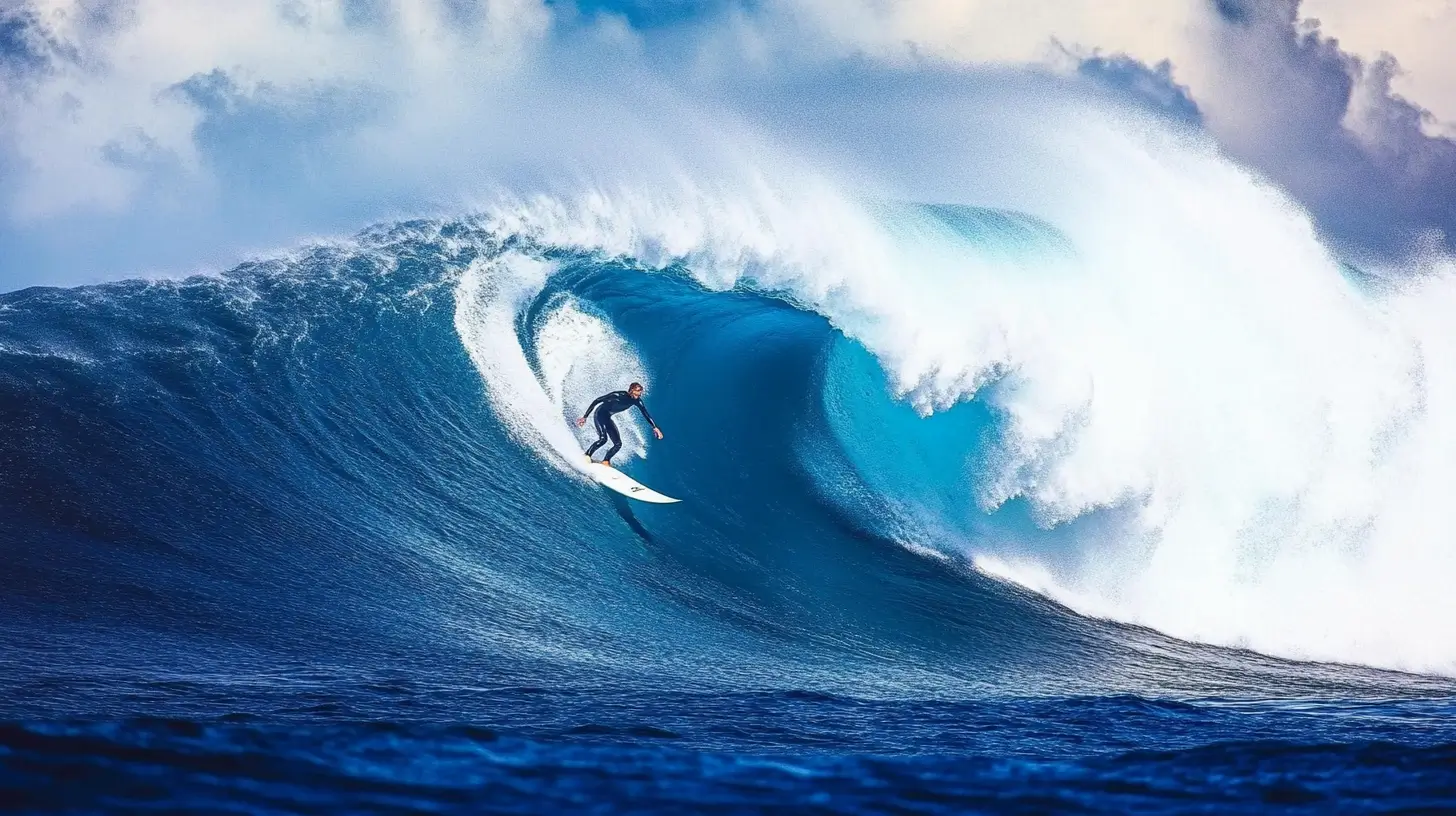Want to know the key surfing statistics? This article breaks down everything experienced surfers, from the global surf population and economic impact to Olympic participation and environmental stewardship, offering vital insights for surfers of all levels. Before diving into the detailed statistics, let’s explore some essential facts about surfing that every enthusiast should know.
Key Takeaways
- Surfing has deep historical roots, originating in ancient Polynesia, where the art of catching a breaking wave was a significant cultural practice, and has evolved significantly through cultural influences, particularly in Hawaii and the impact of figures like Duke Kahanamoku.
- The global surfing population is approximately 20 to 35 million, with the US and Australia accounting for around 20-35% of this figure, reflecting surfing’s appeal despite geographical limitations that affect participation.
- Surfing is not only a sport but an economic driver, projected to generate $236.6 billion in the tourism sector by 2034, with increasing accessibility through wave pools and surf parks encouraging growth in participation.
| Category | Statistic | Details |
|---|---|---|
| Global Surfing Population | 35 Million | There are an estimated 35 million surfers worldwide. |
| Top Surfing Destinations | USA, Australia, Brazil, Indonesia | These countries are known for their world-class surfing spots and large surfing communities. |
| Economic Impact | USD 10 Billion (Global Market) | The global surfing industry, including surf equipment, apparel, and tourism, generates over $10 billion annually. |
| Annual Growth Rate | 4.2% | The surfing industry is growing at an annual rate of 4.2%, driven by increasing interest and surf tourism. |
| Average Surfer Age | 34 Years | The average age of surfers has increased, reflecting a broadening demographic that includes older, more affluent individuals. |
| Gender Distribution | 19% Female, 81% Male | While predominantly male, female participation in surfing is steadily increasing. |
| Top Surf Brands Market Share | Quiksilver, Billabong, Rip Curl | These brands dominate the surfwear and surfboard market, holding a significant industry share. |
| Surf Tourism Revenue | USD 4 Billion Annually | Surf tourism contributes significantly to local economies, particularly in developing countries with popular surf spots. |
| Most Popular Surfboard Type | Shortboards (60% of Surfers) | Shortboards are the most popular type of surfboard, especially among experienced surfers. |
| Most Dangerous Surf Spots | Pipeline (Hawaii), Teahupo’o (Tahiti), Mavericks (California) | These spots are known for their massive waves and challenging conditions, attracting only the most experienced surfers. |
| Environmental Concerns | Plastic Pollution, Coastal Erosion | Surfers increasingly advocate for ocean conservation, addressing plastic pollution and coastal erosion. |
| Average Surf Session Duration | 1.5 Hours | The average duration of a surfing session can vary based on conditions and surfer endurance. |
| Surfing Injury Rate | 2.2 Injuries per 1,000 Surfer Hours | The most common injuries include cuts, sprains, and dislocations, often caused by collisions or contact with the board. |
| Olympic Inclusion | 2020 Tokyo Olympics | Surfing debuted as an Olympic sport in the 2020 Tokyo Olympics, showcasing its growing global recognition and popularity. |
| Social Media Influence | 15 Million Hashtags on Instagram (#surfing) | Surfing is a highly popular topic on social media, with millions of posts showcasing the lifestyle, skills, and scenic locations. |
| Top Surf Competitions | World Surf League (WSL), Triple Crown of Surfing, ISA World Surfing Games | These are some of the most prestigious competitions in professional surfing, attracting top athletes worldwide. |
The Evolution of Surfing: From Ancient Times to Modern Day
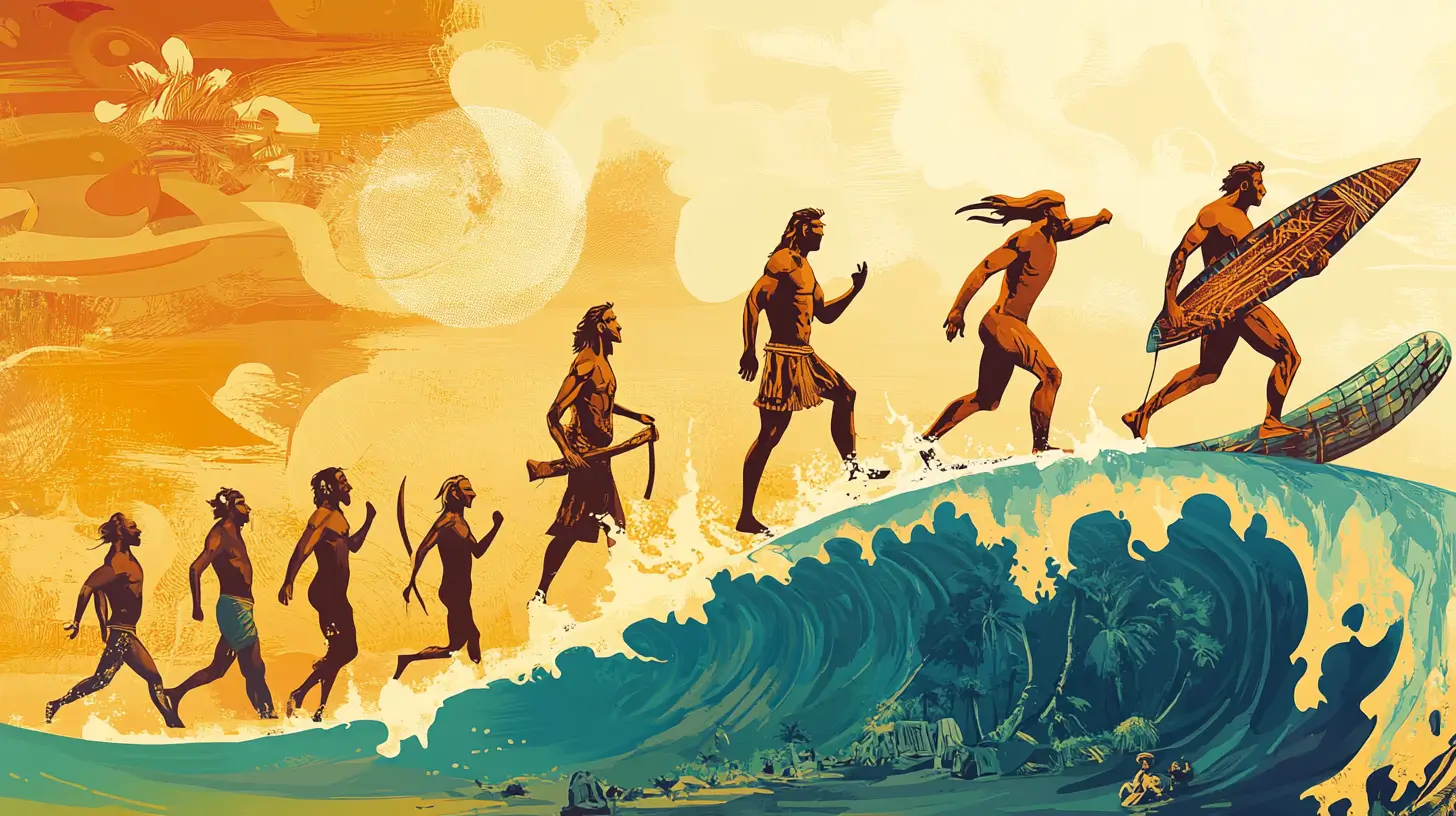
Surfing has a rich history that dates back to ancient civilizations. The earliest references to surfing were recorded in Polynesia, where cave paintings from the 12th century depict wave riding. This ancient art of riding ocean waves was more than just a pastime; it was deeply woven into these societies’ cultural and religious fabric. Similarly, in Peru, evidence shows that surfers rode waves on reed boats, underscoring the global roots of this exhilarating sport.
In ancient Hawaii, surfing was a vital part of religious practices. Chiefs and commoners would take to the waves, and surfing held significant spiritual and social meaning. Understanding how and where waves break was crucial for ancient surfers, as modern surfers, to optimize their wave-riding experiences.
This cultural heritage laid the groundwork for modern surfing, linking today’s surfers with an ancient tradition that spans continents and centuries.
The modern era of surfing was shaped by Duke Kahanamoku, a Hawaiian who won a gold medal in swimming at the 1912 Olympics. Duke’s international fame popularized surfing worldwide, inspiring many to participate. His legacy shows how surfing can transcend boundaries, uniting people through their love for the ocean.
As surfing gained popularity, the equipment evolved. The earliest surfboards were made from solid wood, which was heavy compared to today’s designs. Over the decades, modern surfboards themselves have transformed significantly, incorporating lighter and more durable materials. These contemporary designs make it easier for surfers of all levels to ride the waves, continually pushing the sport’s boundaries.
Global Surf Population Overview

The global surfing community is vast and diverse, with millions riding waves yearly. According to the International Surfing Association, there are approximately 20 to 35 million surfers worldwide. This number highlights surfing’s widespread appeal, drawing enthusiasts from all corners of the world around the globe.
In the United States and Australia, surfing numbers are particularly high. The US alone has an estimated 6 to 7 million surfers. Australia’s country, known for its prime surf spots and vibrant surf culture, boasts a similar number, making it a key destination for surfing Australia. These two countries represent about 20-35% of the global surfing population, underscoring their significant role in the sport’s international landscape.
Despite its popularity, surfing falls behind other major sports in participation. For instance, soccer, the world’s most popular sport, has around 265 million participants globally. However, surfing’s unique allure lies in the profound connection surfers feel with the ocean and the lifestyle it promotes.
Surfing vs. Other Popular Sports
While surfing may not rank among the top 10 most participated sports globally, its growth here in the United States is noteworthy. Over the past 17 years, the US surfing population has grown by 94%. This surge reflects a broader trend of increasing interest in outdoor and adventure sports.
One reason surfing doesn’t compete with sports like basketball, volleyball, or badminton in participation is geographical constraints. With 48 landlocked countries, many people cannot access ocean waves. This limitation inherently caps the number of surfing participants compared to more universally accessible sports.
Approximately 81 percent of surfers are male, and a significant portion of surfing participants are over 25. This demographic profile suggests that surfing attracts a dedicated and passionate community, often characterized by a deep, lifelong commitment to the sport. Unlike some sports that people may play casually, surfing usually becomes a central part of one’s identity, embodying a lifestyle that only a surfer or a professional surfer truly understands.
Economic Impact of Surfing
Surfing is not just a sport; it’s a significant economic driver, particularly in coastal regions. The surfing tourism sector is projected to reach approximately $236.6 billion by 2034. This growth is fueled by a compound annual growth rate (CAGR) of 12.3% from 2024 to 2034. These impressive figures underscore the sport’s economic importance.
2023 the surfing tourism market was valued at about $65.9 billion. This market includes a wide range of activities, such as:
- Surf schools
- Equipment rentals
- Accommodations
- Travel
Domestic tourists play a crucial role in this market, accounting for 67.5% of all surfing-related activities. Their participation emphasizes the sport’s broad appeal and economic impact.
Wave surfing dominates the market, making up 60.6% of all surfing tourism activities. Additionally, the surf park market is projected to grow at a compound annual rate of 11.5%, potentially reaching $3.8 billion by 2028. These figures highlight surfing’s substantial economic impact, driven by natural waves and artificial surf parks.
Surfing in the Olympics
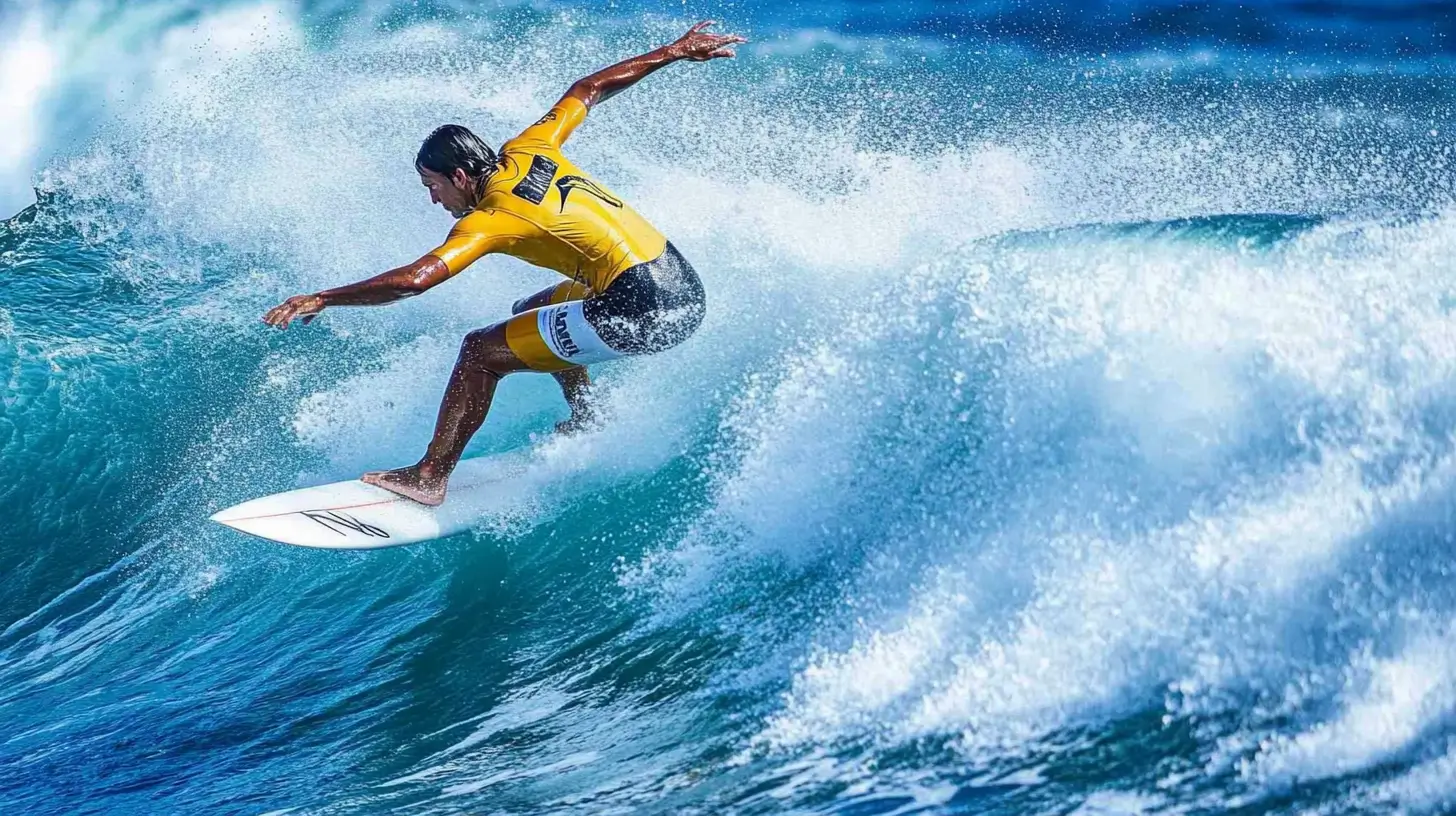
The inclusion of surfing in the Olympic Games marks a significant milestone for the sport. Surfing made its Olympic debut during the Tokyo 2020 event, significantly boosting its global visibility and popularity. This historic moment brought surfing to a wider audience, showcasing the skills and dedication of professional surfers on an international stage.
The 2024 Paris Olympics will feature surfing competitions in Tahiti, French Polynesia. This location highlights the sport’s deep connection to its Polynesian roots and provides an ideal setting for showcasing world-class surfing. Additionally, efforts aim to include para surfing in the 2028 Paralympic Games, further broadening the sport’s inclusivity and reach.
The Olympic spotlight has enhanced surfing’s profile and inspired a new generation of athletes. The platform has provided unprecedented exposure for the sport, attracting more participants and fans worldwide. This increased interest is expected to have a lasting impact, further integrating surfing into the global sports community.
Wave Pools and Surf Parks
Wave pools and surf parks are revolutionizing the accessibility of surfing, making it possible for people in landlocked areas to experience the sport. Introducing a wave pool is expected to significantly increase surfing participation, potentially doubling the number of surfers to over 50 million. This expansion opens up new opportunities for those who might never have had the chance to ride a wave.
Artificial wave parks have made surfing more accessible and inclusive. In 2024 alone, nine new wave pools are anticipated to open, marking the highest single-year increase. These facilities provide a controlled environment for learning and practicing, helping beginners build confidence before tackling ocean waves.
Technological advancements in wave generation enhance the realism of artificial waves, offering experiences that closely mimic natural ocean conditions. This innovation attracts surfers of all skill levels, from novices to seasoned pros, who seek the thrill of surfing in various wave conditions and catching waves. Wave pools, stationary waves, surf parks, wave breaks, and wave formation are expanding the sport’s reach and pushing the boundaries of what’s possible in surfing.
Environmental Stewardship Among Surfers
Surfers have a unique and profound connection to the ocean, making them some of the most passionate advocates for environmental stewardship. Maintaining ocean health is crucial, cold water surfers say, as the quality of waves directly impacts their ability to enjoy the sport. Many surfers seek to protect the environments that provide them with so much joy and challenge.
Surf schools can be pivotal in fostering environmental awareness among new surfers. These schools can inspire a new generation of environmentally conscious surfers by integrating conservation education into their lessons. Learning to surf often deepens one’s connection to the ocean, turning casual participants into dedicated advocates for marine conservation.
However, the growing popularity of surf tourism can lead to environmental degradation if not managed sustainably. This underscores the need for responsible practices within the west coast surfing community. Surfers are encouraged to engage in local environmental initiatives, helping to protect and restore coastal ecosystems. Surfers can significantly reduce their ecological footprint by promoting eco-friendly alternatives in their gear and practices.
Surf Culture and Community
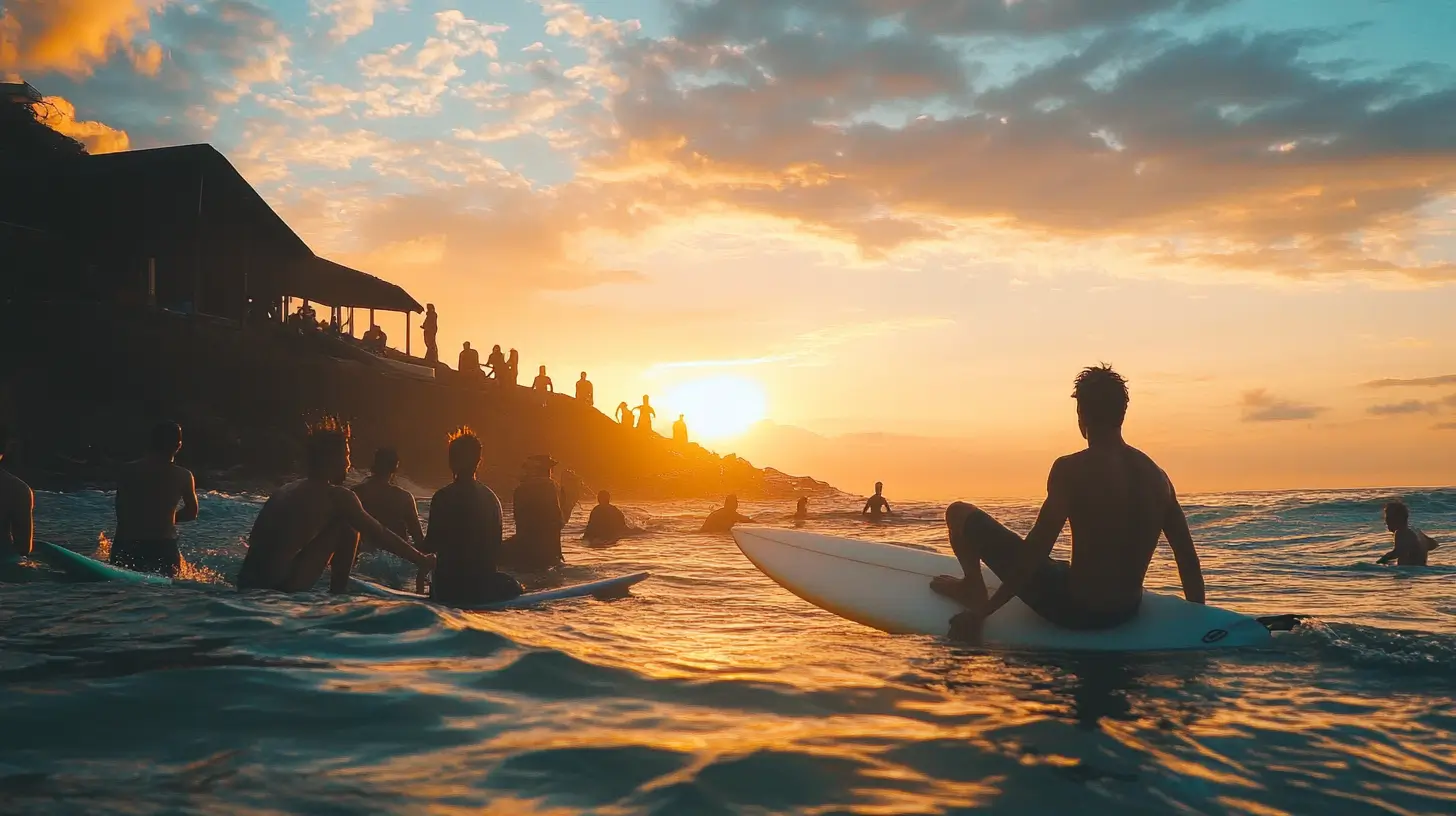
The surf community is characterized by a vibrant and inclusive culture that transcends borders and unites people through their shared love for the ocean. The number of female surfers in the US has increased significantly, making up 35% of all surfers. This growing diversity reflects the sport’s expanding inclusive nature of surf culture.
Surf parks increasingly offer programs for individuals of all skill levels, promoting inclusivity within the sport. Government initiatives in various countries are enhancing surfing tourism by improving coastal infrastructure and promoting local and surfboard culture. These efforts help build a supportive community welcoming newcomers and celebrating experienced surfers.
The surfboard and culture embody a lifestyle that promotes freedom, creativity, and a disconnect from societal pressures. Surfers are often viewed as entrepreneurs who embrace risk and seek adventure through their connection with nature.
This culture encourages living in the moment, feeling alone, prioritizing experiences over material possessions, and fostering a deep appreciation for the ocean and natural surroundings, often reflected in the choice of surfboards and clothing.
Surfing Safety and Etiquette
Surfing safety is paramount to ensure that everyone can enjoy the waves without accidents or injuries. Before stepping into the water, always check the surf forecast and conditions. Knowing what to expect can help you prepare and avoid dangerous situations.
Once you’re out there, be aware of your surroundings. This includes other surfers, swimmers, and marine life. Respect the ocean and fellow surfers by following basic surfboard etiquette rules. One cardinal rule is never to drop in on another surfer’s wave. Always yield to the side. Only a surfer is on the inside, as they have the right of way.
It’s also crucial to be mindful of your abilities. Don’t push yourself to surf big waves beyond your skill level. This not only puts you at risk but can also endanger others. Always wear a leash to prevent your board from getting lost or hitting someone else.
Knowing basic first aid and how to respond to common surfing injuries can be invaluable. Being prepared can make a significant difference, whether a minor cut or a more serious injury. Following these guidelines can help ensure a safe and enjoyable surfing experience for everyone.
Surfing Industry and Market Trends
The global surfing industry is riding a wave of growth, with projections indicating it will reach $5 billion by 2027. This surge is driven by the increasing popularity of surfing tourism, which is expected to see an 80% increase by 2032. The sport’s governing body, the International Surfing Association (ISA), has seen its revenue from events rise, reflecting its growing appeal.
Wave pools and surI.S.A.arks are at the forefront of this expansion, offering a controlled and consistent surfing experience. These facilities make surfing more accessible, especially in landlocked areas, and are expected to play a significant role in the sport’s future growth.
The surfboard and clothing market is booming, with many brands now offering sustainable and eco-friendly options. This shift towards sustainability resonates with surfers who are passionate about protecting the environment.
Big wave surfers and the broader surf culture drive the biggest wave in the industry’s growth as more people seek out new and exciting wave breaks and surf spots. This adventurous spirit is fueling the demand for innovative products and experiences, ensuring that the surfing industry continues to thrive.
Surfing Hotspots Around the World
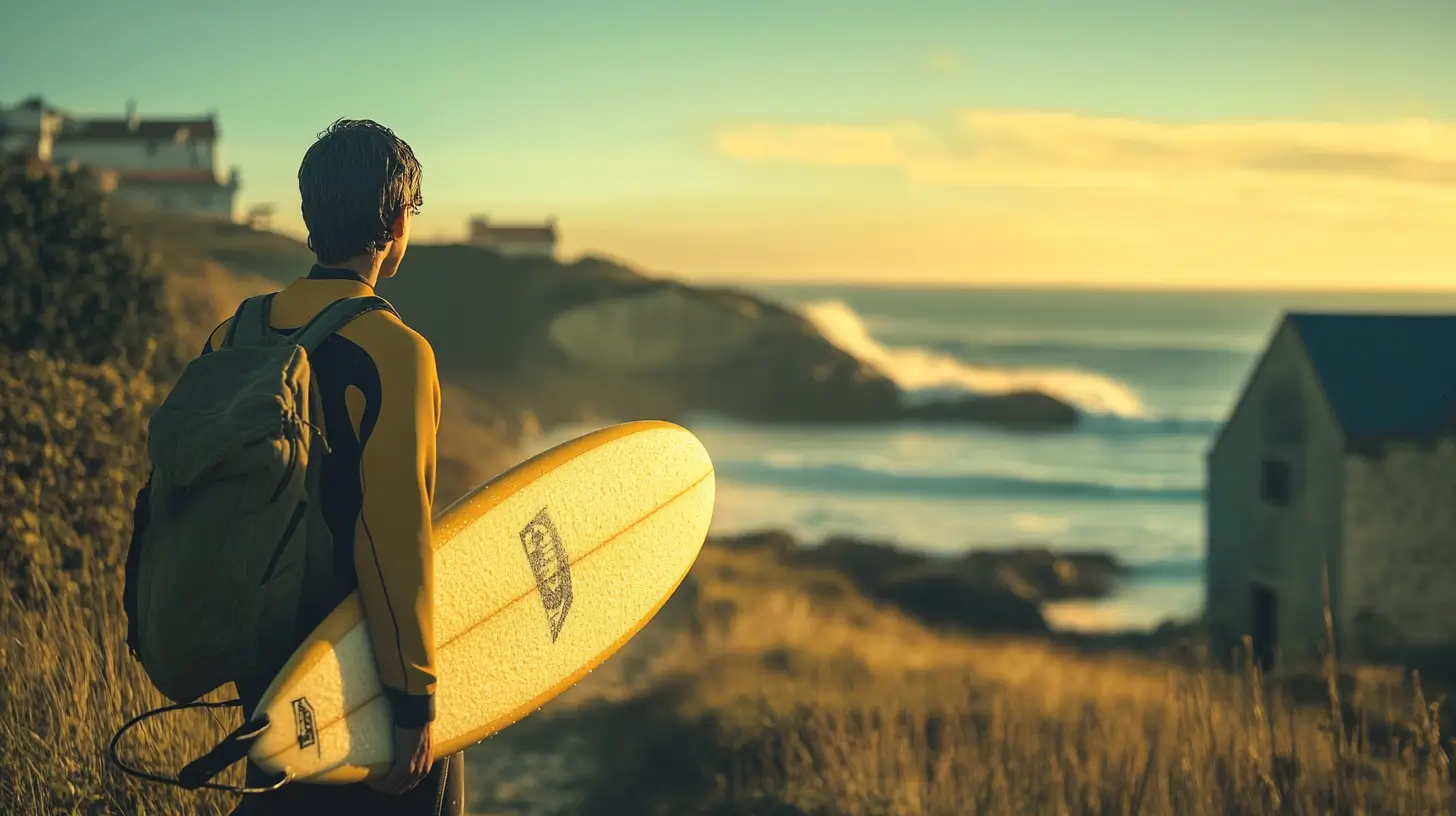
For many surfers, the quest for the perfect wave takes them to some of the most iconic surf spots worldwide. Huntington Beach, California, known as ‘Surf City USA,’ attracts surfers of all skill levels due to its consistent wave conditions. Similarly, Bondi Beach in Australia is world famous for its accessible waves, making it a popular destination for beginners and seasoned surfers.
Jeffreys Bay in South Africa is celebrated for its long, rippable right-hand and point breaks, break breaks, and breaks, ideal for advanced surfers. Meanwhile, Pipeline in Hawaii is renowned for its powerful, barreling waves, making it a prime location for elite surfing competitions. Mavericks in Half Moon Bay, California, features some of the largest waves in the world, drawing extreme surfers who seek the ultimate challenge.
The Gold Coast in Australia, particularly Snapper Rocks, is another hotspot known for its top sand, excellent surf, reef break after reef breaks, and prestigious events. Nazaré in Portugal stands out for its gigantic waves, attracting big wave surfers from around the globe, especially during winter swells.
These destinations, each with unique conditions and cultural significance, continue to lure surfers from the world and all walks of life, united by a common sight and their passion for wave riding.
Future of Surfing
The future of surfing looks bright, with the number of surfers worldwide expected to increase significantly for the first time. The inclusion of surfing in the Olympic Games has already boosted the sport’s popularity, attracting new participants and fans.
Wave pools and surf parks are set to become more common, providing a convenient and accessible way for people to catch waves. These wave pool facilities are expanding the reach of surfing and offering a platform for innovation in wave generation technology.
Sustainability is becoming a key focus in the surfing industry. The industry is making strides towards reducing its environmental impact, from eco-friendly surfboards and wetsuits to sustainable surf clothing. This shift is being driven by both consumer demand and the efforts of organizations like the International Surfing Association, which is working to promote surfing as a global sport.
As surfing continues to grow, there is a growing need for education on surf safety and etiquette. Ensuring surfers know the risks and responsibilities associated with the sport is crucial for maintaining a safe and respectful surfing environment.
In summary, the future of surfing is set to be characterized by growth, innovation, and sustainability at different levels, ensuring that the sport remains vibrant and accessible for generations to come.
Summary
Surfing is a sport with a rich history, a vibrant global community, and a significant economic impact. From its ancient roots in Polynesia and Peru to its modern-day presence in the Olympics, surfing continues to evolve and captivate new audiences. The growing popularity of wave pools and surf parks makes the sport more accessible, while the surfing community remains committed to environmental stewardship.
Whether you’re a surfer, an experienced surfer, or just starting, understanding the key statistics and trends in surfing can enhance your appreciation for this incredible sport. As you paddle out into the waves this summer, remember that you’re part of a global community of wave riders united by a shared passion for the ocean and the endless pursuit of the perfect wave.
Frequently Asked Questions
How many surfers are there globally?
There are approximately five million surfers and 20 million surfers, up to 35 million surfers globally, as the International Surfing Association reported. This reflects the sport’s widespread appeal and growing popularity.
What is the economic impact of surfing?
The economic impact of surfing is significant, with the surfing tourism sector expected to reach around $236.6 billion by 2034, reflecting a robust growth rate of 12.3% annually. This highlights the considerable contribution of surfing to local and global economies.
When did surfing debut in the Olympics?
Surfing debuted in the Olympics during the Tokyo 2020 event, enhancing its global visibility and popularity.
How are wave pools impacting surfing participation?
Wave pools are likely to double surfing participation, potentially raising the number of surfers to over 50 million. This increase could make surfing more accessible and attract new enthusiasts.
What are some of the most popular surfing destinations around the world?
Some popular surfing destinations are Huntington Beach in California, Bondi Beach in Australia, Jeffreys Bay in South Africa, Pipeline in Hawaii, Mavericks in California, the Gold Coast in Australia, and Nazaré in Portugal. Each location offers unique waves that attract surfers from all over the world.

